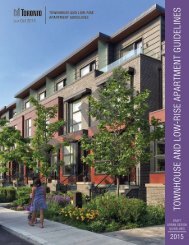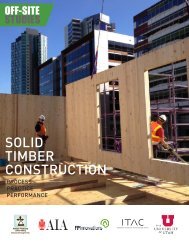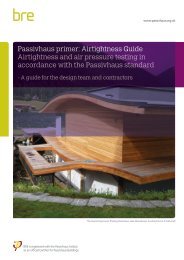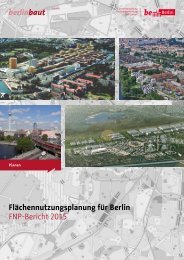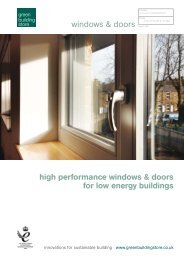TRUE URBAN SPIRIT
b008379b
b008379b
You also want an ePaper? Increase the reach of your titles
YUMPU automatically turns print PDFs into web optimized ePapers that Google loves.
1 VIENNA: SETTING THE STAGE<br />
Vienna in the 1990s<br />
WHERE FROM?<br />
WHERE TO?<br />
VIENNA ON THE MOVE<br />
In the early 1990s, Vienna had a population of<br />
approximately 1.5 million. With the dismantling of<br />
the Iron Curtain and Austria’s accession to the<br />
EU, not only the geopolitical environment underwent<br />
a change. Vienna’s position in the competition<br />
between European cities could suddenly<br />
be viewed from an entirely new perspective:<br />
Vienna as an economic and cultural hub at the<br />
heart of Europe, between “old” EU Member States<br />
and countries striving to enter the European<br />
Union. The process of European integration and<br />
the aftermath of the war in Yugoslavia triggered<br />
new migration flows all over Europe. After decades<br />
of stagnation, Vienna’s population was once<br />
again growing; the Internet was on the rise, with<br />
unheard-of effects for global and local economies;<br />
and the Donau City project laid the cornerstone<br />
for a new economic hub on the other bank of the<br />
Danube.<br />
Vienna after the turn of the millennium<br />
Since the turn of the millennium, Vienna’s population<br />
has notably increased. Questions relating<br />
to social inclusion, housing space provision, sustainability,<br />
employment and innovation of the<br />
urban economy are decisive issues of urban<br />
development policy. Vienna continues to establish<br />
itself as an international leader in the field of<br />
gender equality policy. The gradual enlargement<br />
of the European Union to include Austria’s neighbours<br />
additionally creates novel preconditions<br />
regarding mobility and location development; new<br />
large-scale infrastructure projects such as the<br />
construction of Vienna Main Station and the expansion<br />
of Vienna International Airport are key<br />
pointers to enhance the international attractiveness<br />
of the city as a business location. The<br />
increasing demands posed by modernisation and<br />
growth are inter alia met by Vienna with its<br />
research, technology and innovation campaign<br />
and with the creation of target areas of urban<br />
development, which are to serve as drivers of<br />
concentrated transformation. In the first decade<br />
of the 21 st century, Vienna began to take its<br />
place as a leading international conference venue<br />
and further improved its position in European<br />
city tourism. The global financial crisis of 2008<br />
triggered dramatic economic upheavals, which<br />
had severe effects on public budgets and exacerbated<br />
frame conditions for future development<br />
measures and investments. With the Smart<br />
City Wien initiative for future-oriented, resourcepreserving<br />
urban development, Vienna wants<br />
to set international standards in a thematic area<br />
of global significance.<br />
14



